Elcykelkonverteringssæt er specialiserede pakker designet til at omdanne en traditionel cykel til en elcykel, almindeligvis omtalt som en elcykel. Disse sæt indeholder typisk vigtige komponenter såsom en motor, batteri, controller og forskellige monteringsdele. Hovedformålet med disse sæt er at give et overkommeligt og brugerdefinerbart alternativ til at købe en helt ny elcykel.
Ved at bruge et konverteringssæt kan cyklister beholde deres eksisterende cykelstel og komponenter, samtidig med at de forbedrer deres køreoplevelse med elektrisk assistance. Markedet for konverteringssæt til elektriske cykler er vokset betydeligt i de senere år, drevet af den stigende popularitet af elcykler og ønsket om bæredygtige transportmuligheder. Disse sæt findes i forskellige konfigurationer og henvender sig til forskellige typer cykler, herunder racercykler, mountainbikes og pendlercykler.
Afhængigt af sættet kan brugerne vælge mellem navmotorer, som er integreret i hjulet, eller midtermotorer, som er monteret på cyklens kranksæt. Denne fleksibilitet giver cyklister mulighed for at vælge et konverteringssæt, der bedst passer til deres kørestil og behov.
Vigtige konklusioner
- Elcykelkonverteringssæt er eftermarkedssæt, der kan tilføjes til en almindelig cykel for at omdanne den til en elcykel.
- Fordele ved ombygningssæt til elcykler inkluderer omkostningsbesparelser sammenlignet med at købe en ny elcykel, muligheden for at tilpasse din eksisterende cykel og muligheden for at skifte tilbage til en almindelig cykel, hvis det ønskes.
- Når du vælger det rigtige elcykelkonverteringssæt, skal du overveje faktorer som motortype, batterikapacitet, rækkevidde og kompatibilitet med din eksisterende cykel.
- Installation og vedligeholdelse af elcykelkonverteringssæt kan kræve en vis teknisk viden, men mange sæt leveres med detaljerede instruktioner og support.
- Elcykelkonverteringssæt tilbyder miljømæssige fordele ved at reducere brugen af fossile brændstoffer og giver også sundhedsmæssige fordele ved at fremme fysisk aktivitet. Omkostningsovervejelser og investeringsafkast for elcykelkonverteringssæt vil variere afhængigt af det specifikke sæt og individuelle brugsmønstre.
Fordele ved elcykelkonverteringssæt
En af de vigtigste fordele ved ombygningssæt til elcykler er deres omkostningseffektivitet. At købe en ny elcykel kan være en betydelig investering, ofte fra $1.500 til over $5.000. Ombygningssæt kan derimod findes til en brøkdel af den pris, typisk mellem $300 og $1.500, afhængigt af de inkluderede komponenter.
Denne overkommelige pris gør det tilgængeligt for et bredere publikum at opleve fordelene ved elcykling uden at sprænge budgettet. En anden bemærkelsesværdig fordel er det tilpasningspotentiale, som konverteringssæt tilbyder. Cyklister kan vælge specifikke komponenter, der stemmer overens med deres præferencer og kørevaner.
For eksempel kan en pendler prioritere et letvægtsbatteri for nem transport, mens en offroad-entusiast måske vælger en mere robust motor, der er i stand til at håndtere stejle stigninger og ujævnt terræn. Dette niveau af personalisering sikrer, at rytterne kan skræddersy deres elcykeloplevelse til at opfylde deres unikke behov, hvilket øger den samlede tilfredshed.
Sådan vælger du det rigtige elcykelkonverteringssæt
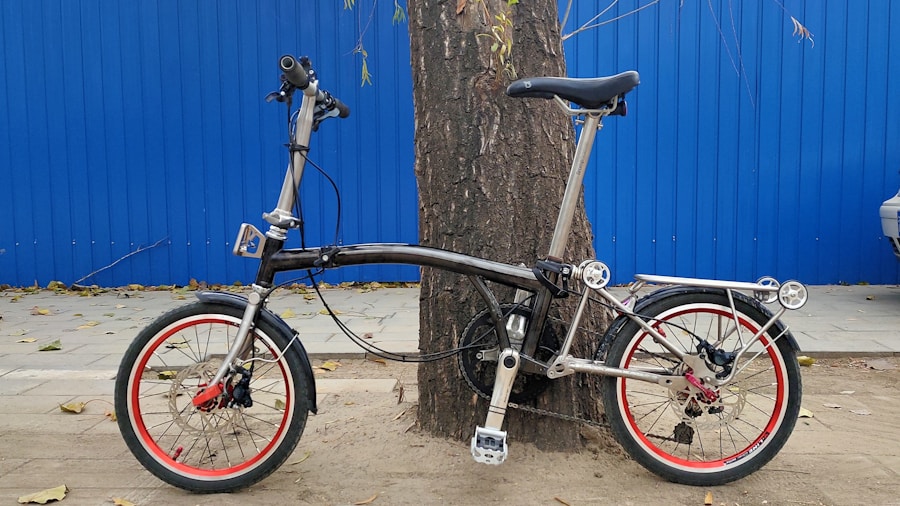
Valg af det passende elcykelkonverteringssæt involverer flere overvejelser, der kan have betydelig indflydelse på ydeevne og brugeroplevelse. Først og fremmest er det vigtigt at vurdere den type cykel, der konverteres. Forskellige sæt er designet til specifikke cykeltyper, såsom mountainbikes eller racercykler, og kompatibilitet er afgørende for optimal ydeevne.
Derudover vil det at forstå den tilsigtede anvendelse af elcyklen – hvad enten det er til pendling, rekreativ kørsel eller offroad-eventyr – hjælpe med at indsnævre mulighederne. En anden kritisk faktor er motortypen og effekten. Navmotorer er generelt nemmere at installere og vedligeholde, men giver muligvis ikke det samme drejningsmoment som midterdrevsmotorer, som ofte foretrækkes til at klatre op ad stejle bakker eller navigere i udfordrende terræn.
Motorens effekt spiller også en afgørende rolle; højere effekt betyder typisk mere kraft og hastighed, men kan også kræve et mere robust batterisystem. Ryttere bør overveje deres lokale regler vedrørende elcykelmotorers effektgrænser for at sikre overholdelse og samtidig maksimere ydeevnen.
Installation og vedligeholdelse af elcykelkonverteringssæt
| Målinger |
Værdi |
| Antal installerede elcykelkonverteringssæt |
5000 |
| Procentdel af kunder, der kræver vedligeholdelse |
15% |
| Gennemsnitlig tid for installation |
2 timer |
| Gennemsnitlig tid til vedligeholdelse |
1 time |
| Antal vedligeholdelsesanmodninger pr. måned |
100 |
Installation af et elcykelkonverteringssæt kan være et givende projekt for dem med grundlæggende mekaniske færdigheder. De fleste sæt leveres med detaljerede instruktioner, der guider brugerne gennem installationsprocessen trin for trin. Installationen involverer typisk at fjerne det eksisterende hjul (hvis du bruger en navmotor), montere motoren, montere batteriet sikkert på stellet og tilslutte de nødvendige ledninger.
Mens nogle personer vælger at klare dette projekt selvstændigt, foretrækker andre måske at søge hjælp fra en professionel cykelmekaniker for at sikre korrekt installation. Når elcyklen er installeret, er regelmæssig vedligeholdelse afgørende for at holde den i optimal stand. Dette omfatter kontrol af batteriets tilstand, sikring af, at de elektriske forbindelser er sikre, og inspektion af mekaniske komponenter såsom bremser og gear.
Vedligeholdelse af batterier er særligt vigtigt; lithium-ion-batterier bør oplades i henhold til producentens anvisninger og opbevares køligt og tørt, når de ikke er i brug. Derudover vil det at holde cyklen ren og fri for snavs forlænge dens levetid og forbedre dens ydeevne.
Miljømæssige og sundhedsmæssige fordele ved elcykelkonverteringssæt
Elcykelkonverteringssæt bidrager positivt til både miljømæssig bæredygtighed og personlig sundhed. Ved at konvertere en traditionel cykel til en elcykel kan cyklister reducere deres afhængighed af fossildrevne køretøjer til korte pendlerture eller ærinder. Elcykler producerer nul emissioner under drift, hvilket gør dem til en miljøvenlig transportmulighed, der hjælper med at reducere luftforurening og CO2-aftryk.
I takt med at byer i stigende grad kæmper med trafikpropper og forureningsproblemer, kan promovering af elcykler som et alternativt transportmiddel spille en betydelig rolle i at skabe renere bymiljøer. Fra et sundhedsperspektiv opfordrer elcykler til fysisk aktivitet, samtidig med at de yder assistance, når det er nødvendigt. Mange cyklister oplever, at elcykler giver dem mulighed for at cykle oftere, end de ville gøre på en traditionel cykel, på grund af den ekstra støtte under udfordrende ture eller lange distancer.
Dette kan føre til forbedret kardiovaskulær sundhed, øget udholdenhed og forbedret generelt fitnessniveau. Derudover kan elcykler gøre cykling mere tilgængeligt for personer med fysiske begrænsninger eller dem, der er nye inden for cykling, hvilket fremmer inklusion i aktiv transport.
Omkostningsovervejelser og investeringsafkast for elcykelkonverteringssæt

Investeringsafkast og besparelser
Med hensyn til investeringsafkast (ROI) kan elcykler føre til betydelige besparelser over tid sammenlignet med traditionelle køretøjer. Ved at bruge en elcykel til pendling eller ærinder i stedet for at køre bil, kan cyklister spare på brændstofomkostninger, parkeringsafgifter og vedligeholdelsesudgifter til køretøjer. Derudover tilbyder mange byer incitamenter til køb eller ombygning af elcykler som en del af deres bæredygtighedsinitiativer, hvilket yderligere udligner omkostningerne.
Miljømæssige og sundhedsmæssige fordele
I takt med at byområder fortsætter med at fremme cykelinfrastruktur og politikker, der sigter mod at reducere biltrafikken, kan investering i et elcykelkonverteringssæt give både økonomiske fordele og bidrage positivt til samfundets sundheds- og miljømål.
En bæredygtig løsning for cyklister
Kort sagt, elcykelkonverteringssæt er en innovativ løsning for cyklister, der ønsker at forbedre deres køreoplevelse, samtidig med at de fremmer bæredygtighed og sundhedsmæssige fordele. Med omhyggelig overvejelse af kompatibilitet, motortype, installationsprocesser og løbende vedligeholdelsesbehov kan cyklister med succes omdanne deres traditionelle cykler til effektive elcykler, der passer til deres unikke præferencer og livsstil.
Ofte stillede spørgsmål
Hvad er et konverteringssæt til en elcykel?
Et konverteringssæt til elcykler er et sæt komponenter, der kan tilføjes til en almindelig cykel for at konvertere den til en elcykel. Sættet indeholder typisk en motor, et batteri, en controller og andre nødvendige dele.
Hvad er fordelene ved at bruge et konverteringssæt til elcykler?
Nogle fordele ved at bruge et elcykelkonverteringssæt inkluderer:
– Omkostningseffektivitet: Det er ofte mere overkommeligt at ombygge en almindelig cykel til en elcykel end at købe en ny elcykel.
– Bæredygtighed: Ombygningssæt til elcykler muliggør genbrug af eksisterende cykler, hvilket fremmer bæredygtighed.
– Tilpasning: Brugere kan vælge de specifikke komponenter, de ønsker i deres konverteringssæt, hvilket muliggør tilpasning baseret på individuelle præferencer.
– Sundhedsmæssige fordele: Elcykler kræver stadig at man træder i pedalerne, hvilket giver motion, samtidig med at de tilbyder assistance til længere distancer eller op ad bakke.
Findes der forskellige typer ombygningssæt til elcykler?
Ja, der findes forskellige typer elcykelkonverteringssæt, herunder forhjuls-, baghjuls- og midterdrevssæt. Hver type har sine egne fordele og overvejelser, såsom nem installation og motorplacering.
Hvilke faktorer skal man overveje, når man vælger et konverteringssæt til en elcykel?
Når du vælger et konverteringssæt til en elcykel, skal du overveje faktorer som typen af sæt (forhjul, baghjul eller mellemhjul), motoreffekt, batterikapacitet, rækkevidde og kompatibilitet med den eksisterende cykel. Det er også vigtigt at overveje garantien og kundesupporten fra producenten af sættet.
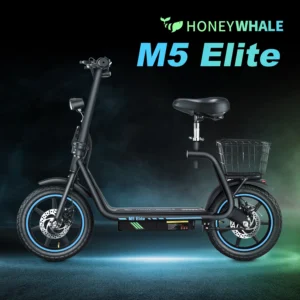 HONEYWHALE M5 Elite El-løbehjul til voksne med sædepeak 750W motor 45 km maks. rækkevidde 40 km/t 14" dæk 48V13Ah batteri EL-løbehjul
2 × 897,70 €
HONEYWHALE M5 Elite El-løbehjul til voksne med sædepeak 750W motor 45 km maks. rækkevidde 40 km/t 14" dæk 48V13Ah batteri EL-løbehjul
2 × 897,70 € 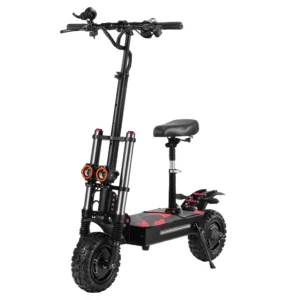 BOYUEDA S3-11 El-løbehjul 6000W Dobbelt Kraftig Motor 60V38AH Batteri 120KM Maks. Rækkevidde 85KM/T Hastighed Sammenklappelig El-løbehjul til Voksen
2 × 2 281,37 €
BOYUEDA S3-11 El-løbehjul 6000W Dobbelt Kraftig Motor 60V38AH Batteri 120KM Maks. Rækkevidde 85KM/T Hastighed Sammenklappelig El-løbehjul til Voksen
2 × 2 281,37 €  VD61 Display til Bafang mellemmotor CAN Bus elcykel Display kompatibel med M625 M325 M225 M200 M400 M500 M600 M620 M420 M510
1 × 88,30 €
VD61 Display til Bafang mellemmotor CAN Bus elcykel Display kompatibel med M625 M325 M225 M200 M400 M500 M600 M620 M420 M510
1 × 88,30 € 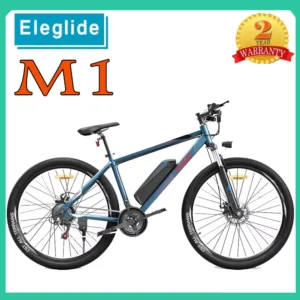 ELEGLIDE M1 Elcykel til voksne, opgraderet version, 27,5 tommer, mountainbike, urban cykel, 250W, Hall, børsteløs motor, SHIMANO gearskifter 21
1 × 974,95 €
ELEGLIDE M1 Elcykel til voksne, opgraderet version, 27,5 tommer, mountainbike, urban cykel, 250W, Hall, børsteløs motor, SHIMANO gearskifter 21
1 × 974,95 € 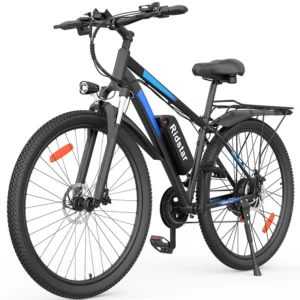 Ridstar S29PRO 1000W 48V 15Ah 30-50km/t >60km 29" Elcykel
1 × 1 006,96 €
Ridstar S29PRO 1000W 48V 15Ah 30-50km/t >60km 29" Elcykel
1 × 1 006,96 €  Electrib E5B 6000W 60V 40Ah 85 km/t 150 km 11" Tohjulet Elscooter
1 × 1 236,31 €
Electrib E5B 6000W 60V 40Ah 85 km/t 150 km 11" Tohjulet Elscooter
1 × 1 236,31 €  isinwheel S9 Max El-løbehjul til voksne 36V 10,4Ah batteri 30-40 km maks. rækkevidde 500 W motor 30 km/t foldbar smart app el-løbehjul kick
2 × 593,26 €
isinwheel S9 Max El-løbehjul til voksne 36V 10,4Ah batteri 30-40 km maks. rækkevidde 500 W motor 30 km/t foldbar smart app el-løbehjul kick
2 × 593,26 € 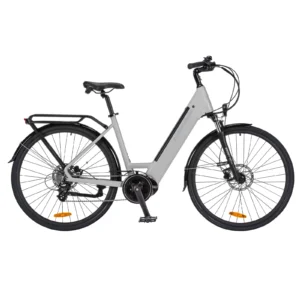 Dame elcykel eCity 43,2 V 250 W M200 mellemmotor City elcykel Pedelec, 12 Ah batteri, 8 gear,
2 × 1 180,46 €
Dame elcykel eCity 43,2 V 250 W M200 mellemmotor City elcykel Pedelec, 12 Ah batteri, 8 gear,
2 × 1 180,46 € 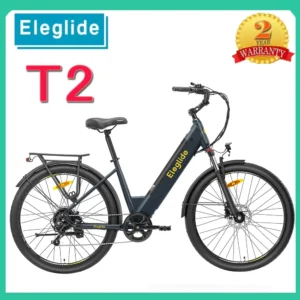 Eleglide T2 27,5" Elcykel til voksne 250W motor 36V 13Ah 100 km rækkevidde med hydrauliske skivebremser 25 km/t Elcykel
2 × 1 269,45 €
Eleglide T2 27,5" Elcykel til voksne 250W motor 36V 13Ah 100 km rækkevidde med hydrauliske skivebremser 25 km/t Elcykel
2 × 1 269,45 € 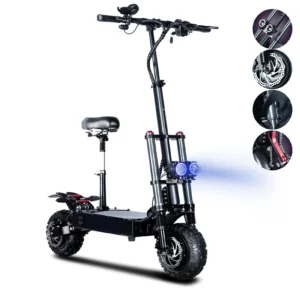 X10 El-scooter, X10, 6000W, 60V, 40Ah, 75-85 km/t, 60-100 km, 11" Offroad-scooter
1 × 1 404,01 €
X10 El-scooter, X10, 6000W, 60V, 40Ah, 75-85 km/t, 60-100 km, 11" Offroad-scooter
1 × 1 404,01 € 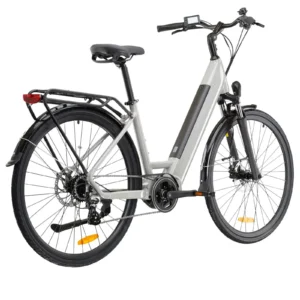 Elcykel, City Bike, Elcykler, Elcykel 43 V 12 Ah Batteri op til 150 km, Elcykel 28 tommer, Elcykel 250 W Motor Maks. 25 km/t
1 × 1 179,71 €
Elcykel, City Bike, Elcykler, Elcykel 43 V 12 Ah Batteri op til 150 km, Elcykel 28 tommer, Elcykel 250 W Motor Maks. 25 km/t
1 × 1 179,71 €  Touroll U1 26 Elcykel til voksne 26" 250W Motor 13Ah Aftageligt Li-ion Batteri 21-Speed MTB Cykel El Mountainbike
1 × 819,95 €
Touroll U1 26 Elcykel til voksne 26" 250W Motor 13Ah Aftageligt Li-ion Batteri 21-Speed MTB Cykel El Mountainbike
1 × 819,95 € 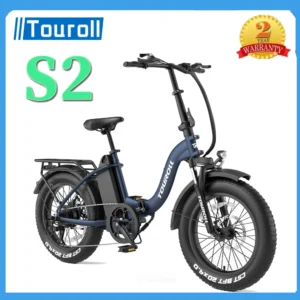 Touroll S2 Voksencykler 20" 250W Motor Elcykler 25 km/t 720Wh Batteri 120 km Rækkevidde 48V 15Ah Elcykler
3 × 1 269,45 €
Touroll S2 Voksencykler 20" 250W Motor Elcykler 25 km/t 720Wh Batteri 120 km Rækkevidde 48V 15Ah Elcykler
3 × 1 269,45 €  OUKITEL ABEARL P5000 Solcellegenerator Bærbar Kraftværk 5120Wh 2200W Output Problemfri 2000W UPS Ladestationer
1 × 2 426,59 €
OUKITEL ABEARL P5000 Solcellegenerator Bærbar Kraftværk 5120Wh 2200W Output Problemfri 2000W UPS Ladestationer
1 × 2 426,59 €  KuKirin G4 Max 3200W 60V 35,2Ah 86 km/t 95 km 12" Offroad El-Scooter
1 × 2 789,56 €
KuKirin G4 Max 3200W 60V 35,2Ah 86 km/t 95 km 12" Offroad El-Scooter
1 × 2 789,56 €  Kukirin G4 Max, G4 Max, 3200W, 60V, 35,2Ah, 86 km/t, 95 km, 12" elektrisk løbehjul med dobbelt motor
1 × 2 789,56 €
Kukirin G4 Max, G4 Max, 3200W, 60V, 35,2Ah, 86 km/t, 95 km, 12" elektrisk løbehjul med dobbelt motor
1 × 2 789,56 €  OUKITEL BP2000 Bærbar Kraftstation 2048Wh/640000mAh LiFePO4 Batteri 2200W AC Udgang Solcellegenerator Ladestationer
1 × 1 494,65 €
OUKITEL BP2000 Bærbar Kraftstation 2048Wh/640000mAh LiFePO4 Batteri 2200W AC Udgang Solcellegenerator Ladestationer
1 × 1 494,65 € 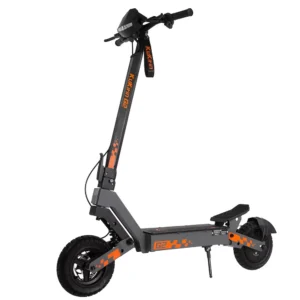 KuKirin G2 El-løbehjul til voksne, Peak 1200W motor 48V 15,6Ah batteri, 9" dæk, 45 km/t maks. hastighed, 65 km rækkevidde, foldbar el-løbehjul
1 × 783,80 €
KuKirin G2 El-løbehjul til voksne, Peak 1200W motor 48V 15,6Ah batteri, 9" dæk, 45 km/t maks. hastighed, 65 km rækkevidde, foldbar el-løbehjul
1 × 783,80 €  7.4V 1500mAh 18650 Lipo-batteri til Wltoys SCY fjernstyrede biler Ekstra batteri Reservebatteri
1 × 39,60 €
7.4V 1500mAh 18650 Lipo-batteri til Wltoys SCY fjernstyrede biler Ekstra batteri Reservebatteri
1 × 39,60 € 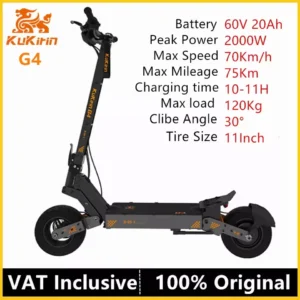 KuKirin G4 2400W 60V 20Ah 70 km/t 75 km 11" Offroad Foldbar Scooter
1 × 1 056,76 €
KuKirin G4 2400W 60V 20Ah 70 km/t 75 km 11" Offroad Foldbar Scooter
1 × 1 056,76 € ![[TIL SALG] Elektrisk Mountainbike 29 tommer 8 gear Elcykel 250W Midtermotor 43V12AH Aftageligt batteri Elcykel til voksne Kraftig MTB](https://electricstore.eu/wp-content/uploads/2025/05/kf-S545b53ca0d344851bb43ea47488b02af8-300x300.webp) [TIL SALG] Elektrisk Mountainbike 29 tommer 8 gear Elcykel 250W Midtermotor 43V12AH Aftageligt batteri Elcykel til voksne Kraftig MTB
1 × 1 251,04 €
[TIL SALG] Elektrisk Mountainbike 29 tommer 8 gear Elcykel 250W Midtermotor 43V12AH Aftageligt batteri Elcykel til voksne Kraftig MTB
1 × 1 251,04 € 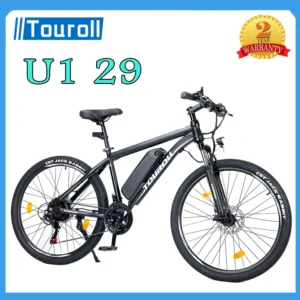 Touroll U1 29 Elcykel 250W Motor 13Ah Aftageligt Li-ion Batteri 65 km Rækkevidde 29x2.25' CST Offroad Dæk 21-Speed Shimano Gear
2 × 897,45 €
Touroll U1 29 Elcykel 250W Motor 13Ah Aftageligt Li-ion Batteri 65 km Rækkevidde 29x2.25' CST Offroad Dæk 21-Speed Shimano Gear
2 × 897,45 €  Børne Elmotorcykel 150W 24V 3.0AH Batteri Dobbelt Hastigheds LED Lys til Børn Over 6 År Sort Farverig
1 × 326,98 €
Børne Elmotorcykel 150W 24V 3.0AH Batteri Dobbelt Hastigheds LED Lys til Børn Over 6 År Sort Farverig
1 × 326,98 € 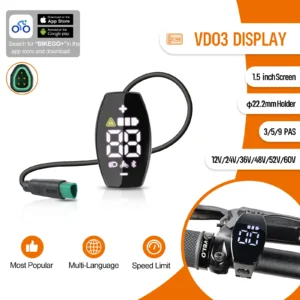 VD03 Display til Bafang mellemmotor CAN Bus elcykel Display support-app kompatibel med BBS01B BBS02B BBS-HD M200 M400 M500 M600
1 × 48,31 €
VD03 Display til Bafang mellemmotor CAN Bus elcykel Display support-app kompatibel med BBS01B BBS02B BBS-HD M200 M400 M500 M600
1 × 48,31 € 


